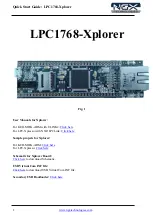
Restarting the System
MVME197LEIG/D1
3-7
3
just been powered up. All static variables (including disk device and controller
parameters) are restored to their default states. The breakpoint table and offset
registers are cleared. The target registers are invalidated. Input and output
character queues are cleared. Onboard devices (timer, serial ports, etc.) are
reset, and the first two serial ports are reconfigured to their default state.
During WARM reset, the 197Bug variables and tables are preserved, as well as
the target state registers and breakpoints.
Reset must be used if the processor ever halts, or if the 197Bug environment is
ever lost (vector table is destroyed, stack corrupted, etc.).
Abort
Abort is invoked by pressing and releasing the ABORT switch on the
MVME197LE front panel. Whenever abort is invoked when executing a user
program (running target code), a “snapshot” of the processor state is captured
and stored in the target registers. (When working in the debugger, abort
captures and stores only the Instruction Pointer (IP), status register, and
format/vector information). For this reason, abort is most appropriate when
terminating a user program that is being debugged. Abort should be used to
regain control if the program gets caught in a loop, etc. The target IP, register
contents, etc., help to pinpoint the malfunction.
Pressing and releasing the ABORT switch generates a local board condition
which may interrupt the processor if enabled. The target registers, reflecting
the machine state at the time the ABORT switch was pressed, are displayed on
the screen. Any breakpoints installed in the user code are removed and the
breakpoint table remains intact. Control is returned to the debugger.
Break
A “Break” is generated by pressing and releasing the BREAK key on the
terminal keyboard. Break does not generate an interrupt. The only time break
is recognized is when characters are sent or received by the console port. Break
removes any breakpoints in the user code and keeps the breakpoint table
intact. Break also takes a snapshot of the machine state if the function was
entered using SYSCALL. This machine state is then accessible to the user for
diagnostic purposes.
Many times it is desired to terminate a debugger command prior to its
completion, for example, the display of a large block of memory. Break allows
the user to terminate the command.
Solution Systems Technologies Inc.
720-565-5995 | [email protected] | www.solusys.com
Solution Systems Technologies Inc.
720-565-5995 | [email protected] | www.solusys.com
















































